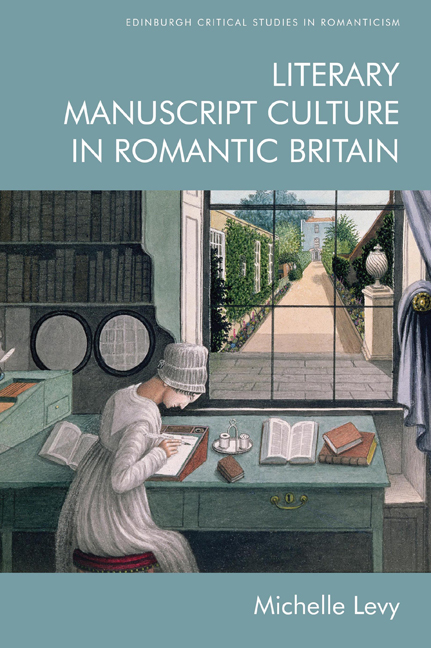Book contents
- Frontmatter
- Contents
- List of Illustrations
- Acknowledgements
- Dedication
- Introduction
- 1 Intentionality and the Romantic Literary Manuscript
- 2 Literary Reviews and the Reception of Manuscript Culture
- 3 Anna Barbauld’s Poetic Career in Script and Print
- 4 Lord Byron, Manuscript Poet
- 5 Jane Austen’s Fiction in Manuscript
- 6 Script’s Afterlives
- Afterword: Blake’s Digitised Printed Script
- References
- Index
- Plate Section
Afterword: Blake’s Digitised Printed Script
Published online by Cambridge University Press: 08 October 2020
- Frontmatter
- Contents
- List of Illustrations
- Acknowledgements
- Dedication
- Introduction
- 1 Intentionality and the Romantic Literary Manuscript
- 2 Literary Reviews and the Reception of Manuscript Culture
- 3 Anna Barbauld’s Poetic Career in Script and Print
- 4 Lord Byron, Manuscript Poet
- 5 Jane Austen’s Fiction in Manuscript
- 6 Script’s Afterlives
- Afterword: Blake’s Digitised Printed Script
- References
- Index
- Plate Section
Summary
This coda brings Literary Manuscript Culture in Romantic Britain to a close with a short consideration of William Blake's ‘Illuminated Printing’, his practice of conjoined printing of word and image, which he describes as a ‘method of Printing both Letter-press and Engraving in a style more ornamental, uniform, and grand, than any before discovered’. Blake's unique process for printing manuscripts becomes emblematic of the connections between the two media that have been the subject of this book. By fusing the roles of author and publisher, illustrator and bookseller, Blake sought to collapse the communications circuit, consolidating it within a single agent – himself. As Michael Phillips notes:
By writing his own text, making his own designs and etching them together in relief so that the entire page could be printed from the same surface, Blake placed himself in sole charge of each step in the creation, reproduction, pricing, and publication of his illuminated books, apart from making the paper.
Blake's motivations for devising a method of printing and book production ‘which combines the Painter and the Poet’ points to his dissatisfaction with contemporary book production and to his desire to create a material form fusing script and drawing, letterpress and engraving.
As a visual artist and commercial engraver, Blake was intimately familiar with the separate processes used to reproduce and combine words and images within printed books. As Joseph Viscomi notes, ‘the conventional illustrated book was the product of much divided labour’, and this division was readily apparent to any reader. If words and images were reproduced on a single page, they necessarily occupied separate regions of the page, reflecting the different process used for printing letterpress and engraving images: first, letterpress would be printed leaving a blank space in an area where the engraving was to be printed, and then the sheet would be printed by the engravers, who would impress the engraving into the blank. Image and text could be further divided within the book itself, as when separate engraved leaves were tipped into letterpress books.
- Type
- Chapter
- Information
- Literary Manuscript Culture in Romantic Britain , pp. 259 - 267Publisher: Edinburgh University PressPrint publication year: 2020



